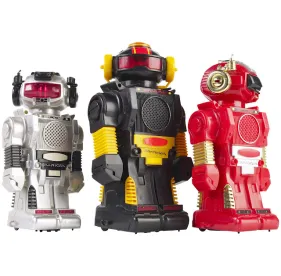The U.S. Consumer Product Safety Commission (CPSC) announced potential changes to its 2002 Age Determination Guidelines Relating Children’s Ages to Toy Characteristics and Play Behavior (2002 Guidelines). The new draft guidance, titled Guidelines for Determining Age Appropriateness of Toys (Draft 2018 Guidelines), “addresses toys that have come onto the market since the last update and provides changes to the recommended age group for certain classic toys.” The plan to issue a Federal Register notice was announced at the International Consumer Product Health and Safety Organization (ICHPSO) conference in February 2018, and the updated draft was formally published on March 27, 2018. Congress specifically made the 2002 version of the guidelines one of four key factors for determining whether a consumer product is a children’s product, so this proposed set of changes will affect the children’s product industry.
The Draft 2018 Guidelines have been updated to take account of new toys that have come onto the market since 2002, changes in consumer purchasing behavior, and children’s access to toys. The Draft also reassesses the 2002 Guidelines’ age determinations based on a broad literature review, parent toy survey, and observational study of 243 children, ages 1 to 8 years old, and their parents across four age brackets: 1 to 1.5 years old; 1.6 to 2 years old; 3 to 5 years old; and 6 to 8 years old. The guidelines contain four levels, each representing an increasing level of detail: play categories; toy subcategories; age groups; and toy characteristics. The agency staff’s draft revisions were developed with input from the Child and Family Research Section staff at the National Institute of Child Health and Human Development (NICHD) within the National Institutes of Health (NIH).
The 2018 Draft Guidelines make age-grade recommendations for new products, such as play touchscreen phones, suction cup building pieces, wooden trains with magnetic pieces, and magnetic puzzles. The 2018 Draft Guidelines also recommend changes for a variety of toys, including microscopes, colorful wooden blocks, large basketball hoops, and toy cameras with viewfinder function. Other revisions include recommended testing changes, such as shifting existing small parts or use-and-abuse testing requirements based on age grades that are different from the 2002 Guidelines.
CPSC staff explains that “many toy-related injuries could be prevented by age-labeling products for the age group for whom they are intended. Providing the consumer product toy industry with better age-grading guidance, and describing how these principles can be applied to their products, can help reduce product-related incidents and reduce costly compliance and enforcement actions.”
The CPSC’s Age Determination Guidelines play an important role in determining not just the suitability of toys for children in different age ranges, but also which safety requirements apply to a particular toy. Interested stakeholders should carefully review the updated Draft 2018 Guidelines with a view to identifying whether the CPSC and NIH staff’s assessments, evaluations, and test results match their information and experience. Focus group testing and evaluations from manufacturers, industry groups, or other outside groups could help improve and inform CPSC staff’s conclusions.
Comments on the Draft 2018 Guidelines may be submitted here until June 11, 2018.




 />i
/>i

